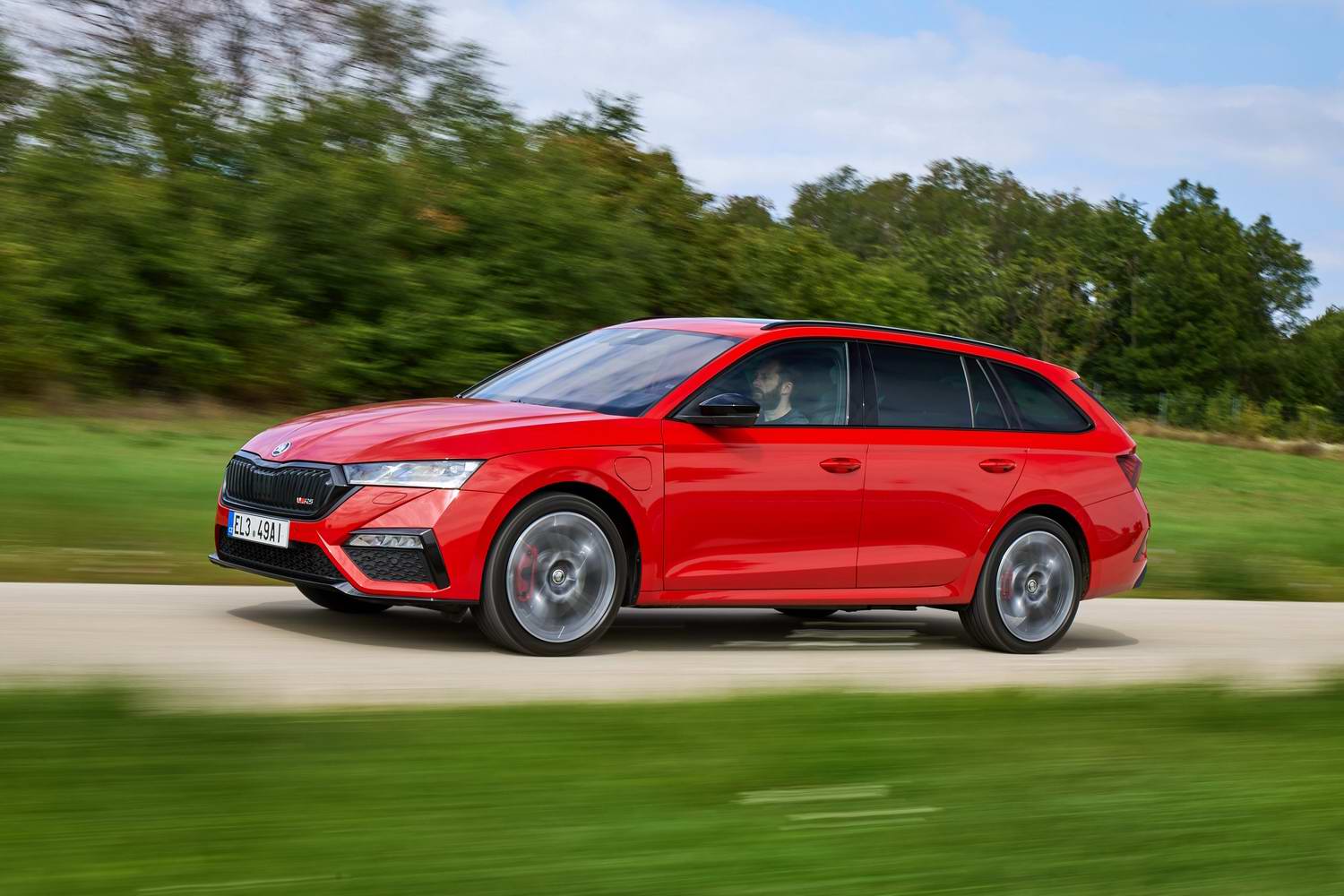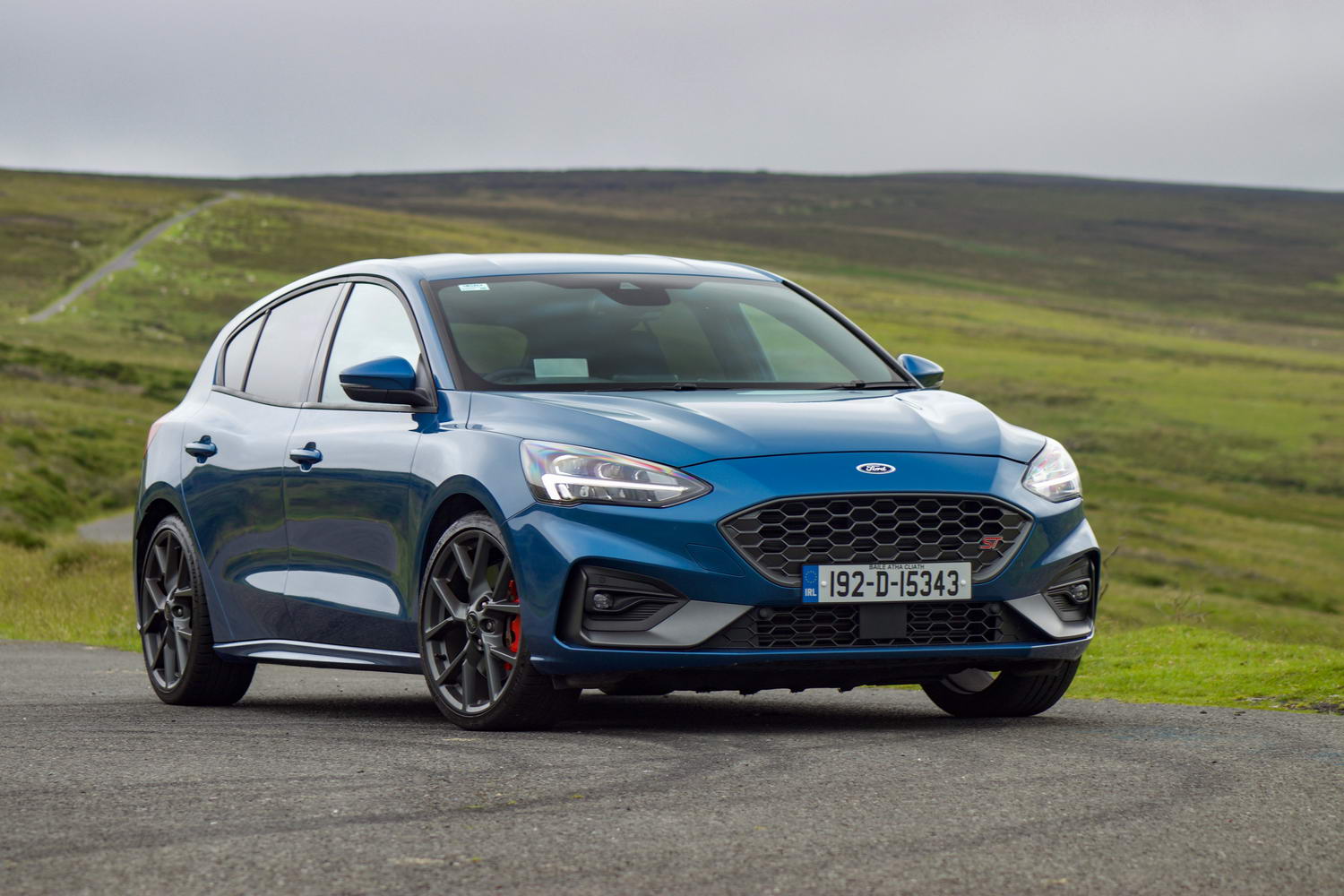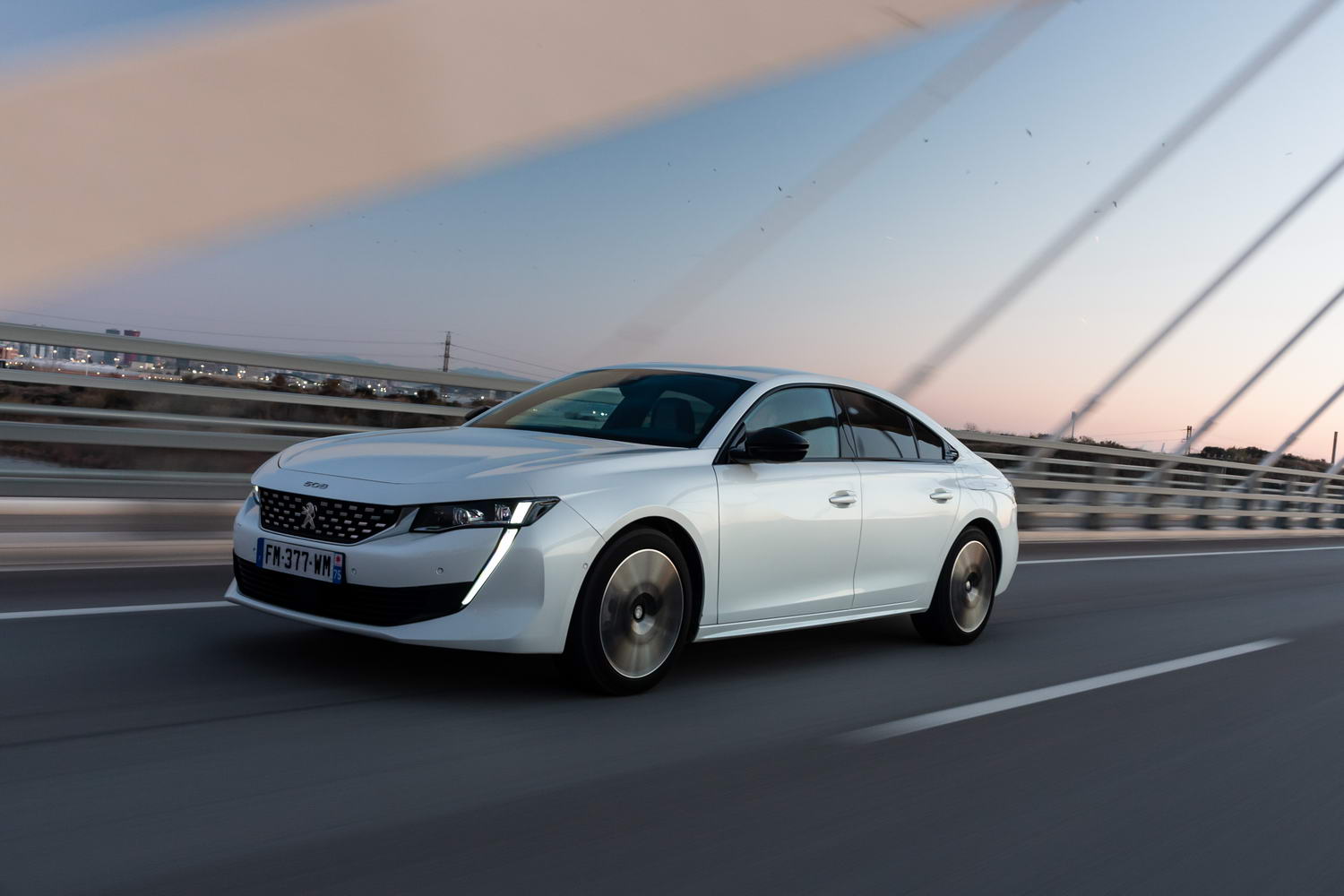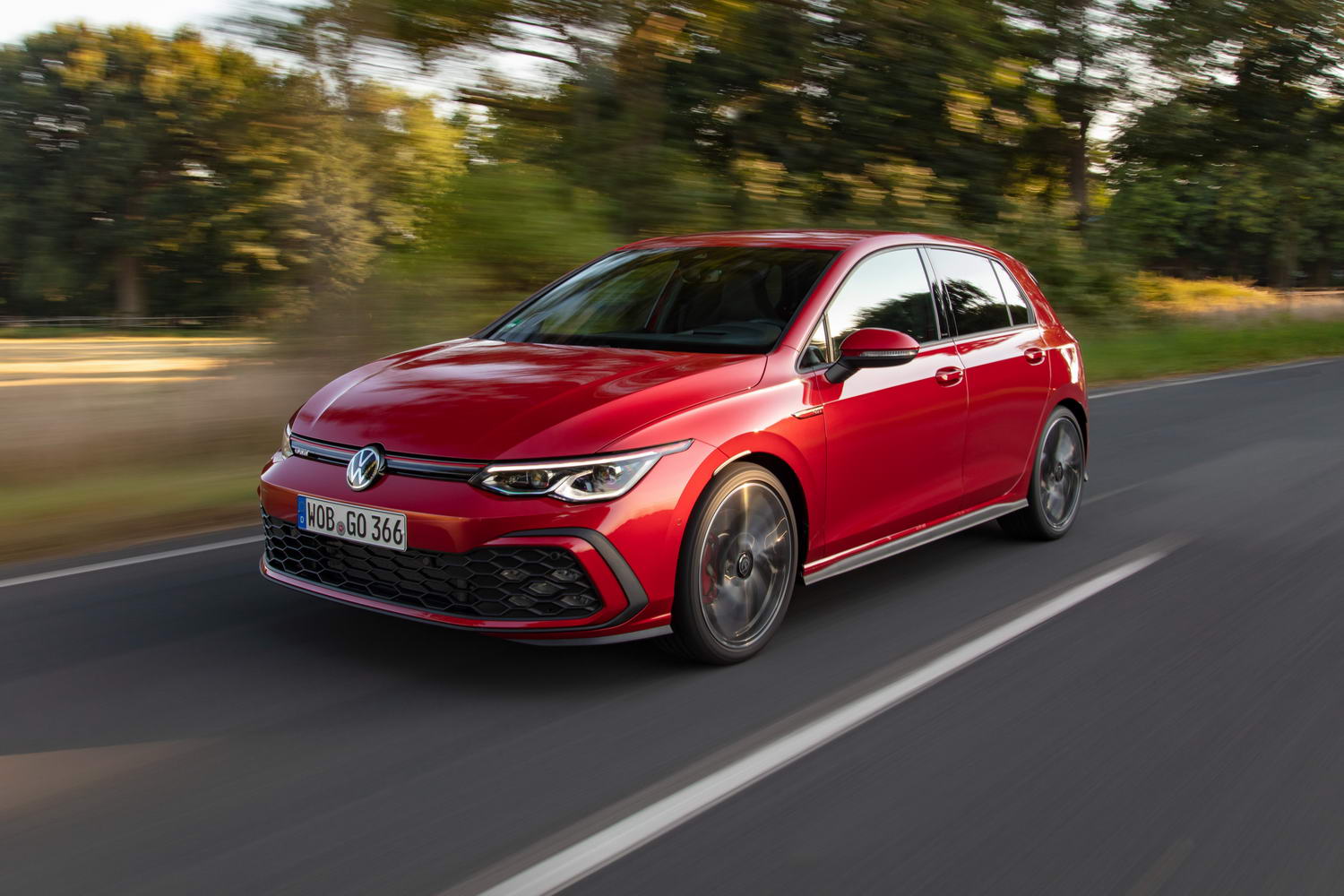Using a plug-in hybrid powertrain to create the Skoda Octavia RS iV brings several benefits in terms of running costs and potentially lower tailpipe emissions, but will driving enthusiasts be enamoured by this combination? We test it out in Combi estate format.
In the metal
The Skoda Octavia RS does stand out from the less sporty versions of the Octavia thanks in part to the generous application of gloss black trim around the car's exterior. A bespoke front bumper further adds to the theme of greater performance, but this is a car that sees its visual impact somewhat reliant on the choice of colour. The red you see here looks the best as it shows off the RS parts that bit more. The estate, or Combi as Skoda prefers to call it, doesn't get a rear spoiler (the hatch does), but the black roof rails blend in well with the window surrounds and contrasting door mirror caps.
As standard, the Octavia RS gets 18-inch alloy wheels, and there is a choice of a 19-inch wheel design called 'Altair Aero' that will be familiar to RS fans - these come in anthracite or silver finish. Due to the placement of the lithium-ion battery in the rear of the car, and the additional weight that brings, this plug-in hybrid RS doesn't get a lowered ride height, as the pure combustion engined RS models will. That leaves a noticeable amount of daylight beneath the sills and in the wheel arches, but Skoda gives the suspension some specific tuning to keep some sportiness in the handling department. The only other visual difference is the battery charge port, which is located on the front left wing.
Due to the need to package the battery, cargo capacity is impacted, reducing to 490 litres (or to 1,555 litres with the rear seats folded forward). That's a 150-litre hit, but if there's one advantage it is that the boot floor now sits flush with the load height. What is more positive is the RS-specific styling treatment that Skoda applies to the interior. Unlike the standard Octavia, the RS gets a three-spoke steering wheel, featuring a flattish bottom and perforated leather. The multifunction controls are unchanged, but the 10.25-inch digital instrument display gets bespoke graphics and some modern looking layouts, of which there are several to choose from.
The seats have a high-backed look and offer a blend of materials that have a reasonably high level of quality to their look and feel. The RS logo is stitched into the centre of them and the amount of support and comfort on offer are decent. Across the dashboard runs a carbon fibre effect trim piece with a semi-satin finish and against the Alcantara insert it lifts the cabin to a level not previously experienced in an Octavia RS. The infotainment system is good to use and doesn't appear to fall foul of the issues we've experienced in other recent Volkswagen Group cars.
Driving it
After you've slipped into the sports seats and taken in the appropriately styled dash, you press the start button and well, almost nothing happens. It seems a little strange the first time you start moving away in silence in the Octavia RS iV. Those outside the car are alerted to its presence by a sound generator that emits a specific 'E-noise' at speeds at up to 50km/h. The electric motor can provide up to 330Nm of torque and in the E-mode it can travel at up to 140km/h using only the battery. The 13kWh unit is capable of providing energy for up to 60 kilometres of driving without using the 1.4-litre petrol engine. For some that will be enough to handle the everyday commute, though whether those owners will prefer to remain in electric mode or to use a combination of both is up for debate. Using a 3.6kW wallbox the battery can be fully recharged in just over three and a half hours, while using a domestic 230-volt plug socket will take 3 hours 45 minutes to charge to 80 per cent capacity, or five hours to reach 100 per cent.
The Hybrid mode is quite smooth and refined providing you're judicious with your right foot, and for the majority of situations when the four-cylinder engine does spool into life it does so in a discreet manner. It's a similar story when it disengages. In this setting there isn't a great deal of 'RS-ness' to how the car drives or performs. The engine itself produces a maximum output of 150hp and 250Nm, which are modest figures. If you want to explore the full potential, then the selection of Sport mode brings both engines on stream in addition to changing six-speed gearbox to a more performance-orientated map. This switch makes itself known within the cabin with a boomy engine note that pumps through. The aural trickery does the car no favours, sounding like a gruff boxer engine more akin to a Subaru Impreza from the Gran Turismo 2 era video game that barks every time you prod the accelerator pedal. Over the years we've come to tolerate a certain amount of sound augmentation inside cars, but this time around Skoda has gone overboard with the synthesising in my opinion.
Noise aside, with all systems firing, the Skoda covers ground at a fair clip, though it performs best at lower speeds when it can deliver more instantaneous torque. The force builds in a linear fashion, with maximum torque on tap from around 1,000rpm. However, when you put in a late request for full beans, the four-cylinder engine can start to sound strained as it winds up and the roll-on performance at higher speeds isn't all that impressive. Having that additional weight of the battery in the rear and a generous ground clearance of 143mm doesn't do its centre of gravity many favours and the car lacks the sharpness and precision that the system's power output deserves. Both the steering and brake pedal feel are suitably balanced for the profile of the car, though and, away from the jarring sound of the Sport mode it offers a good degree of refinement and comfort, above the usual remit of an Octavia RS.
What you get for your money
There is still some time to wait until Irish pricing for the Octavia RS iV range will be announced, which also goes for the CO2 and fuel consumption figures. However, if the current government supports remain in place, the Octavia RS iV could wind up being the cheapest of the RS line-up. As soon as pricing is confirmed this section of the review will be updated to reflect a value-for-money rating.
Summary
The new Skoda Octavia RS iV (mostly) looks good, while inside it is a clear step up in quality, both on a visual and tactile basis. Despite what the badging may suggest, however, this car behaves and performs more like a sporty hybrid than a proper RS model. Let's hope the regular combustion engined versions deliver a more exciting performance experience.

























